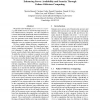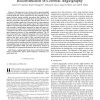96 search results - page 19 / 20 » Exploiting and Protecting Dynamic Code Generation |
HICSS
1995
IEEE
13 years 8 months ago
1995
IEEE
Abstract. We reexamine the limits of parallelism available in programs, using runtime reconstruction of program data-flow graphs. While limits of parallelism have been examined in...
IEEEIAS
2009
IEEE
13 years 12 months ago
2009
IEEE
A computer worm is an autonomous malicious, selfreplicating and propagating piece of code that is able to spread fast in computer networks, exploiting the vulnerabilities it disco...
OSDI
2004
ACM
14 years 5 months ago
2004
ACM
We present a new technique, failure-oblivious computing, that enables servers to execute through memory errors without memory corruption. Our safe compiler for C inserts checks th...
TMI
2010
13 years 3 months ago
2010
—This paper provides a framework for generating high resolution time sequences of 3D images that show the dynamics of cerebral blood flow. These sequences have the potential to ...
ICSE
2009
IEEE-ACM
14 years 6 months ago
2009
IEEE-ACM
We present a new automated white box fuzzing technique and a tool, BuzzFuzz, that implements this technique. Unlike standard fuzzing techniques, which randomly change parts of the...


